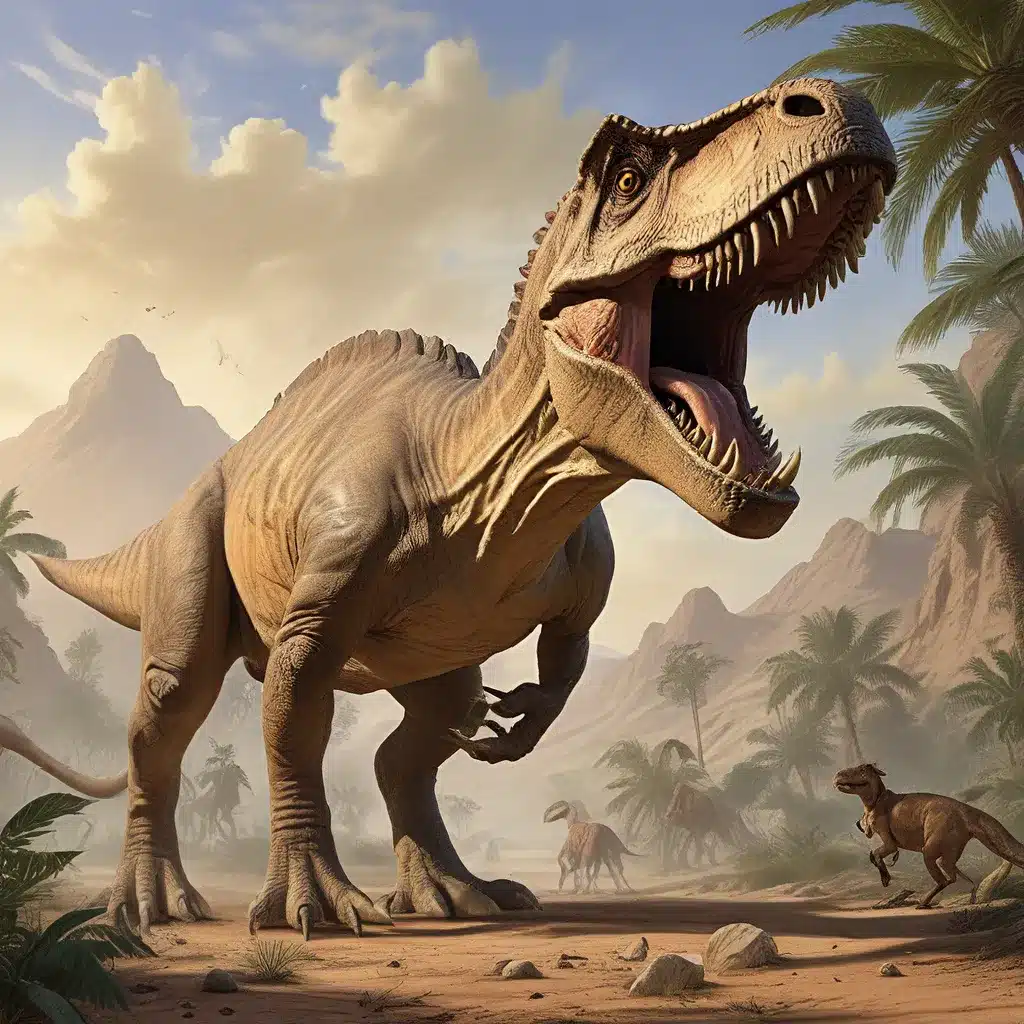
The Emergence of Dinosaurs as Symbols of Industrial Progress
The story of dinosaurs is inextricably linked to the story of capitalism in the United States during the late 19th and early 20th centuries. As the country transformed into an industrial powerhouse, the discovery of these ancient behemoths in the American West captured the public’s imagination and became a symbol of the nation’s economic might and promise.
The first significant dinosaur fossils were unearthed in England during the 1820s and 1830s, but it was not until the last third of the 19th century that these prehistoric creatures truly captured the public’s attention. The American West, rich in mineral resources, proved to be a fertile nesting ground for these remarkable finds, and the rapid pace of industrialization fueled the growing fascination with dinosaurs.
As large corporate firms rose to prominence, supplanting the older system of small, family-owned businesses, wealthy industrialists like J.P. Morgan and Andrew Carnegie began to invest heavily in natural history museums. These institutions became showcases for the towering dinosaur skeletons, which were assembled and displayed with great fanfare, serving as physical embodiments of the country’s economic power and industrial progress.
Paleontologists, tasked with reconstructing these fragmentary remains, relied on inference, judgment, and imagination to bring the dinosaurs to life. The scarcity of the fossil record and the vast temporal chasm separating the present from the prehistoric world allowed people to project their own fears, anxieties, hopes, and fantasies onto these alien creatures.
Dinosaurs as Symbols of American Exceptionalism
The discovery of these colossal fossils in the American West was deeply embedded within the extractive economy that dominated the region at the time. The wealth of amazing specimens unearthed quickly made the United States a world center for vertebrate paleontology, cementing the country’s status as a global leader in this emerging scientific field.
Dinosaurs from the American West were often portrayed as larger, fiercer, and more abundant than their European counterparts, aligning with the narrative of American exceptionalism. Their origin in the deep past also allowed them to be associated with evolutionary theory, which was frequently invoked to explain social, cultural, and economic developments.
However, dinosaurs did not function as a straightforward image of progress. The mass extinction that killed them off at the end of the Cretaceous period mirrored the era’s widespread anxieties about degeneration and decline, and dinosaurs were often inserted into a cyclical narrative that characterized evolutionary development as a series of fits and starts.
The Symbiotic Relationship between Paleontology and Capitalism
The rapid industrialization of the late 19th century created immense wealth, but this prosperity was not equally shared among all segments of society. A small group of financial and industrial capitalists coalesced into an elite social class, and they sought to signal their newfound status through the acquisition of impressive art collections and natural history specimens.
Wealthy elites like Carnegie invested heavily in natural history museums, which offered a means to demonstrate their civic munificence and the altruistic potential of capitalism. Dinosaur paleontology, with its impressive displays and aura of scientific objectivity, proved to be an especially attractive target for this philanthropic largesse.
Interestingly, paleontologists actively sought to distance themselves from the world of commercial affairs, guarding the institutional autonomy of their discipline. This strategic alliance with wealthy donors, who were eager to associate themselves with a genuinely altruistic endeavor, proved mutually beneficial for both parties.
The Dinosaur Renaissance and the Changing Perspectives
In recent decades, we have witnessed a dinosaur renaissance, driven in part by the explosive idea that modern birds are directly descended from dinosaurs. This remarkable revelation has led to a complete reimagining of these prehistoric creatures, transforming them from drab, sluggish, and solitary beings to active, social animals often covered in colorful feathers.
Cutting-edge paleontological research has uncovered a wealth of new discoveries, particularly from northeastern China, where well-preserved fossils have provided unprecedented insights into dinosaur behavior and appearance.
This resurgence of interest in dinosaurs has drawn parallels between the present-day industrialization of China and the Long Gilded Age in the United States, as wealthy Chinese industrialists seek to boost their social distinction through the acquisition of impressive dinosaur collections, much like their American counterparts did over a century ago.
Conclusion: Dinosaurs as Reflections of Societal Transformation
The history of dinosaur paleontology offers a unique perspective on the relationship between science and capitalism, challenging the traditional portrayal of science as a higher calling insulated from the demands of the marketplace. Instead, it reveals how powerful actors and institutions have leveraged their access to capital to shape the research priorities of the scientific community.
Dinosaurs, in their various incarnations, have evolved alongside the transformations of human society, serving as mirrors that reflect our deepest fears, hopes, and aspirations. From symbols of American industrial might to harbingers of evolutionary progress, these prehistoric giants continue to captivate our imaginations and challenge our understanding of the past, present, and future.
As we delve deeper into the mysteries of the ancient world, the study of dinosaurs and their role in human myths and legends offers a rich tapestry of insights into the complex interplay between science, culture, and the ever-changing tides of human civilization.


